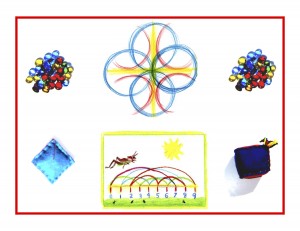Day 149
For one year, 365 days, this blog will address the Common Core Standards from the perspective of creating an alternate, ambient learning environment for math. Ambient is defined as “existing or present on all sides, an all-encompassing atmosphere.” And ambient music is defined as: “Quiet and relaxing with melodies that repeat many times.
Why ambient? A math teaching style that’s whole and all encompassing, with themes that repeat many times through the years, is most likely to be effective and successful. Today’s post will begin reviewing the Common Core ELA standards, moving through them more quickly than the Common Core math standards. The standards will be posted in groups of three to five in blue, followed by their ambient counterparts.
English Language Arts Standards > Reading: Informational Text > Grade 2
Integration of Knowledge and Ideas:
CCSS.ELA-LITERACY.RI.2.7
Explain how specific images (e.g., a diagram showing how a machine works) contribute to and clarify a text.
CCSS.ELA-LITERACY.RI.2.8
Describe how reasons support specific points the author makes in a text.
CCSS.ELA-LITERACY.RI.2.9
Compare and contrast the most important points presented by two texts on the same topic.
Range of Reading and Level of Text Complexity:
CCSS.ELA-LITERACY.RI.2.10
By the end of year, read and comprehend informational texts, including history/social studies, science, and technical texts, in the grades 2-3 text complexity band proficiently, with scaffolding as needed at the high end of the range.
Technology in any form is beyond the understanding of a typical 8 year old. It has been shown by child development psychologists that the true age of reason is not reached until 11 or 12. Until that time, foisting premature understanding onto undeveloped capacities can only result in frustration at best and extreme stress at worst. As the name implies, handwork is work done exclusively by hand, practiced in Waldorf grades up to seven or eight, when the sewing machine is introduced to produce a simple, straight-seam project like sewing a pair of pajama pants.
“Reasons” . . . that inappropriate word again. The child up to age 11 or 12 is quite literal in his or her understanding. Everything is what it seems to be, with no real underlying reasons. A parallel for this mode of thinking is the flat, 2-dimensional plane found in most children’s art. Look at a first grade landscape drawing. You’ll most likely see the sun fixed in a top corner, a band of blue sky across the top, empty space in the middle, and a band of green and brown earth at the bottom. There is no understanding yet of the sky meeting the horizon, instead the blank middle space represents the very air we breathe. Perspective drawing is taught in the Waldorf seventh grade because the child’s consciousness has matured to the point where a 3-dimensional understanding of space is possible. And this expanded consciousness extends to the ability to reason and to perceive others’ reasoning. Not yet!
Compare and contrast: an excellent tool for writing an essay. Too soon however. If the ability to reason has not happened, it is difficult, challenging, and most importantly stress-inducing, to expect this level of writing skill and organization of the 8 year old. As always though, a solid foundation can be built! Two versions of the same story could be told, with two different outcomes. For example, Reynard the Fox could successfully raid the hen house in one version, and be foiled in his attempts by the barnyard dog or cat in the second version. The compare and contrast element could happen more subtly in the telling, retelling, and in the illustrations and academic application of the stories. Most importantly, these abilities are allowed to “sleep” until the optimal time for awakening arrives.
History and social studies are taught indirectly through stories. The moral element shines through all of the literature presented in the younger grades, up to fifth grade (the dawning of the child’s reasoning powers) when the Ancient Civilizations of Greece. Egypt, and India are revealed through story and art. When the modern era is reached in the eighth grade, history continues to be graced with story in the form of anecdotes and biographies. Since independent reading is not yet expected, no scaffolding is needed. Though the literature that’s told, retold, and applied is developmentally appropriate, its quality and content are not watered down to allow independent reading.
Knowledge ensues in an environment dedicated to imaginative, creative knowing, where student and teacher alike surrender to the ensuing of knowledge as a worthy goal. Tune in tomorrow to continue with the Common Core ELA standards and their ambient counterparts.












